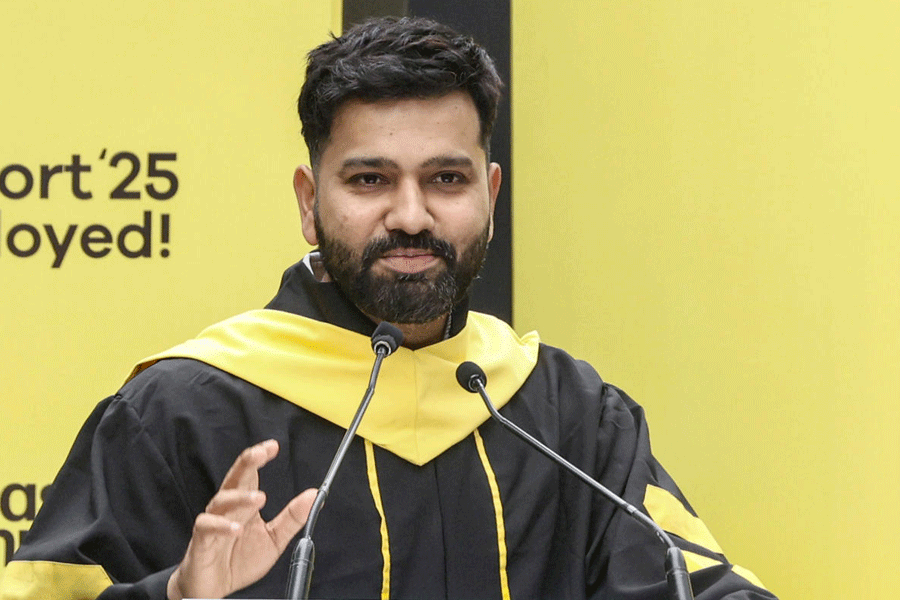 |
London, July 11: “Chi, chi, chi! She has had her baby within marriage — and she is coming from a good family, only!”
Well, Britain has not quite got to that stage yet when women will be considered social outcasts for having children within marriage but the days when girls were stigmatised for having a baby outside the holy state of matrimony are certainly over.
The latest statistics from the Office for National Statistics (ONS) show more babies than ever are being born to unmarried mothers, with women waiting increasingly longer to have children.
In 2012, nearly half (47.5 per cent) of all babies in England and Wales were born outside marriage or a civil partnership, representing a rise of almost 7 per cent in the last decade.
A quarter of the births were to women who were born outside of the UK, up by 0.4 per cent from 2011.
The record figures reflect a long-term rise in the percentage of births outside wedlock — doubling in the last 25 years.
But such social “progress” has largely bypassed the Indian community, which remains entrenched in traditional values. This has worked to the advantage of the Indian community because children with two co-habiting parents are better adjusted and perform well at school and university, all the evidence suggests.
Figures show that in 2011, there were 14,892 births to mothers born in India, with 97 per cent of the births taking place within marriage. For 2010, the figures were 13,575 and 97.9 per cent; for 2009, they were 12,499 and 98 per cent; and in 2008, they were 12,453 and 98.1 per cent. The odd 2 per cent “may not even be Indian but non-Indians born in India”, sources said.
Much the same picture holds true for Pakistanis and Bangladeshis. In 2011, there were 18,434 births to mothers born in Pakistan, with 97 per cent of the births taking place within marriage. Pakistanis manage more births than Indians, with a total population of one million to about 2.5 million Indians. In 1938, there were 621,204 live births in England and Wales. In 2012, with a much bigger population, the figure had increased to only 729,674. This demonstrates Britain has an ageing population. Without a young immigrant population, there would not be the tax revenue to sustain the UK’s benefit system — even though the Tory government wants to reduce migration substantially. The trend of births outside marriage is consistent with an increase in the number of couples living together without getting married, the ONS report said.
In 1938, births outside marriage accounted for 4.2 per cent of the total.
It remained 4.2 per cent when World War II started in 1939 but shot up to 9.3 per cent by 1945 “because of women having affairs, especially with visiting soldiers” and other exceptional reasons.
By 1946, the rate had dropped to 6.6 per cent and to 4.7 per cent in 1953. It went up to 7.9 per cent in 1966, 21.4 per cent in 1986, 43.5 per cent in 2006 and 47.5 per cent last year.
If the trend continues — and there is no reason to see it being reversed — the 50 per cent landmark will be reached by the end of this decade. It is worth emphasising that many of the births are to couples in long-term relationships but who happen not to have “that bit of paper”.
The ONS notes: “There is considerable variation in the proportion of births within marriage/civil partnership depending on the country of birth of the mother, for example, 93 per cent of births to mothers born in the Middle East and Asia took place within marriage/civil partnership in 2011 in comparison to 38 per cent of births to mothers born in the Caribbean.
These variations reflect different societal expectations between cultures, for example, the acceptability of cohabitation.”
The data also shows that the average age of a woman having a baby has risen again to 29.8 years, up from 29.7 years in 2011.
“The rise in 2012 represents a continuation of the increasing age of mothers recorded since 1976,” the report said.
“These trends reflect the increasing numbers of women delaying childbearing to later ages.
“This may be due to a number of factors such as increased participation in higher education, increased female participation in the labour force, the increasing importance of a career, the rising opportunity costs of childbearing, labour market uncertainty, housing factors and instability of partnerships.”
The average age of giving birth falls in unmarried mothers to 27, and increases to 31 in those who are married. Nearly 30,000 were born to women over 40, a record.










